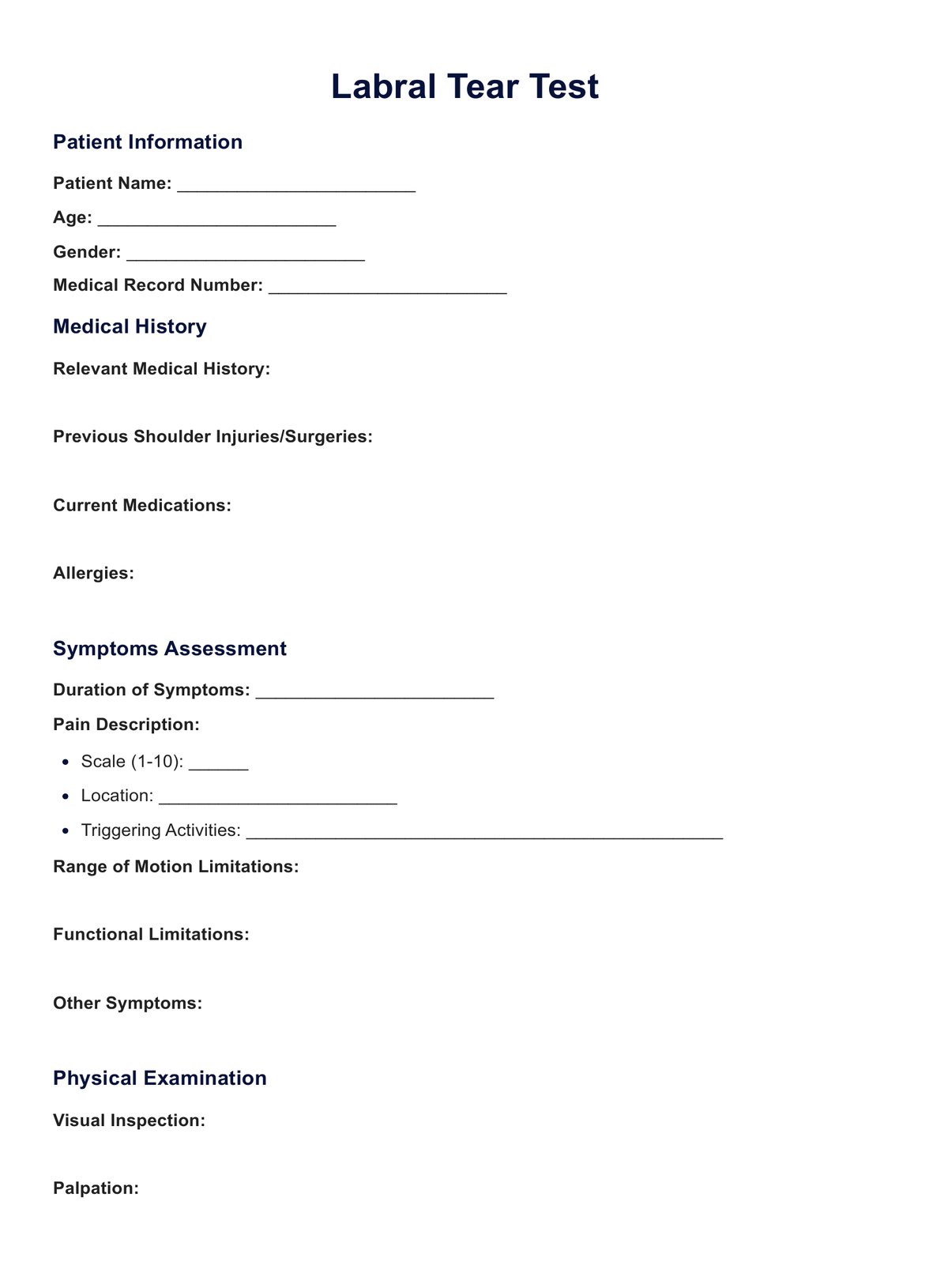A shoulder labrum tear involves injury to the cartilage (labrum) around the shoulder socket, often causing symptoms like deep pain, instability, and a catching sensation in the joint. Diagnosis typically starts with a physical examination, where tests like the Active Compression Test or other tests are used to detect discomfort or clicking sounds indicative of a torn labrum. Orthopedic surgeons may also employ imaging techniques such as shoulder arthroscopy or MRI to visualize the labrum and surrounding structures for a definitive diagnosis.

Shoulder Labral Tear Test
Explore the diagnosis of shoulder labral tears with tests like the Active Compression Test. Learn symptoms, treatment, and care for effective recover.
Shoulder Labral Tear Test Template
Commonly asked questions
SLAP lesions (Superior Labrum Anterior and Posterior) are a specific type of labral tear that occur at the point where the biceps tendon, or the long head of the biceps, attaches to the superior labrum of the shoulder. They are characterized by pain, a popping sensation, and difficulty with certain movements like horizontal adduction. These lesions are a common form of shoulder labrum tears, especially in athletes or individuals engaging in repetitive overhead motions.
Treatment for a torn labrum in the shoulder varies depending on the severity of the tear and the patient's activity level. Non-surgical options may include a rehabilitation program focusing on strengthening and stabilizing the shoulder, often guided by sports medicine specialists. For more severe tears, particularly those involving significant superior labral lesions, arthroscopic surgery might be required. Post-surgery, patients usually undergo a rehabilitation program to regain healthy shoulder function.
EHR and practice management software
Get started for free
*No credit card required
Free
$0/usd
Unlimited clients
Telehealth
1GB of storage
Client portal text
Automated billing and online payments











